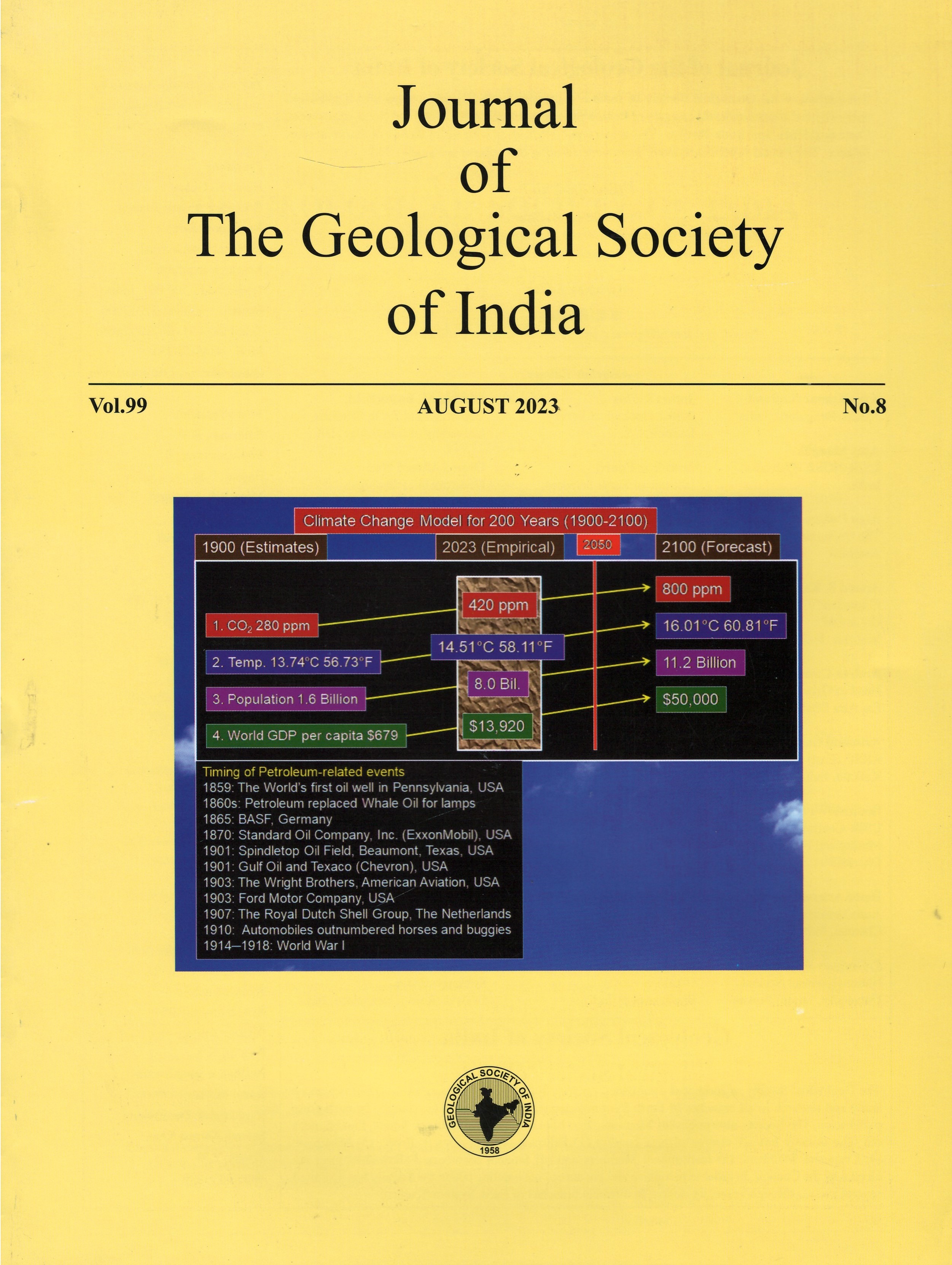Macroseismic Study of 4th January 2016, Manipur Earthquake, and Its Implications
DOI:
https://doi.org/10.1007/s12594-023-2435-5Keywords:
No KeywordsAbstract
An earthquake of magnitude 6.7 M (Latitude 24.834N; Longitude 93.656E) on the Richter scale rocked in the Noney area, Tamenglong district, Manipur on 4th January 2016. The shock was strongly felt in most parts of the Northeastern states of India viz. Manipur, Nagaland, Meghalaya, Assam, and its neighboring countries Myanmar and Bangladesh. Macroseismic study was conducted to assess the intensity of ground motion and related damages caused by the earthquake. The damage incidences were mainly reported in structures constructed over the alluvial fill material. Deformations and development of ground fissures were observed in the epicentral tracts of Manipur and liquefaction phenomenon was observed in the Silchar area Assam. The study revealed that higher damage was confined to the area around Noney, Kabuikhullen, Nungba, Leimakhong, and Imphal valley areas in Manipur and Silchar town areas in Assam.
Based on field observation, the degree of damage to building structures, and data gathered from the local population using the standard questionnaire, different intensity values were assigned to each locality. Isoseismal map was prepared by drawing the boundaries between different intensity areas at MSK-64 scale. The result indicates that the intensity was within the range of IV to VII. The maximum intensity was found VII in parts of Imphal, Tamenglong, and Silchar and very close to the epicentral tract area of Noney; and lowest intensity IV was observed in other parts of the northeastern states around Dimapur and Kohima in Nagaland state. The location of the epicenter of main shock (M 6.7) was at the intersection of the two major lineaments trending to ENE-WSW and NW-SE. The trend and shape of isoseismals drawn on seismotectonic/geological maps are elliptical along ENE-WSW direction and are found more closely spaced in the north and southern parts of the affected area. The elliptical nature of the isoseismals indicates that this seismic event was caused by movement along a linear surface. Furthermore, the orientation of elliptical isoseismals with a major axis trend in an ENE-WSW direction is almost parallel to the ENE-WSW trend of major lineament/fault in the area. As a result, the ENE-WSW lineament/ fault trend appears to be the causative fault for this quake. In addition, one of the nodal plane (NP2) striking 83o, with dip 81o and slip (rake) 38o obtained from fault plane solution USGS shows a similar trend to the direction of generated elliptical isoseismals pattern confirming the event ocurred along a major tectonic lineament in a strike-slip mechanism.

 Harish Kumar
Harish Kumar






